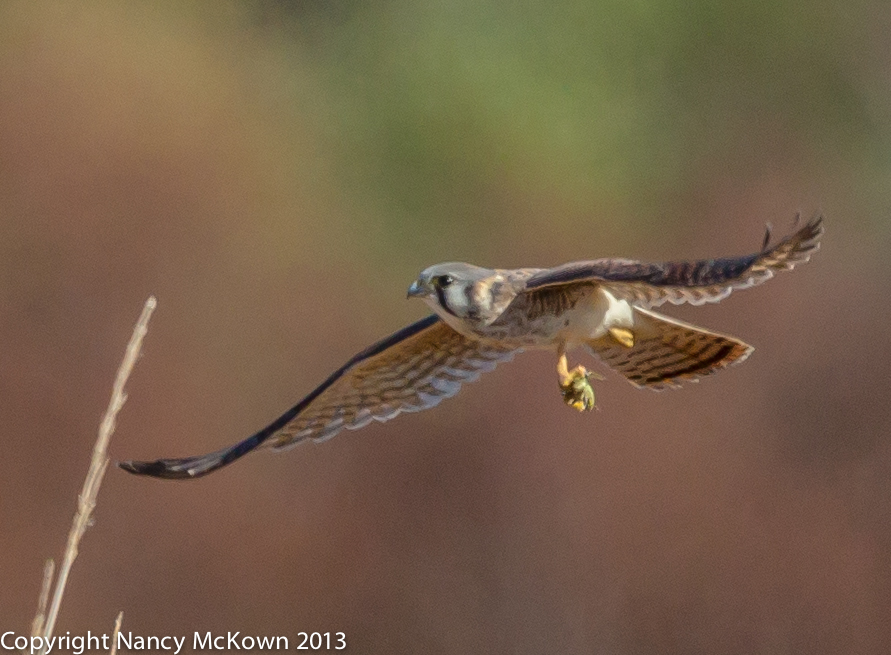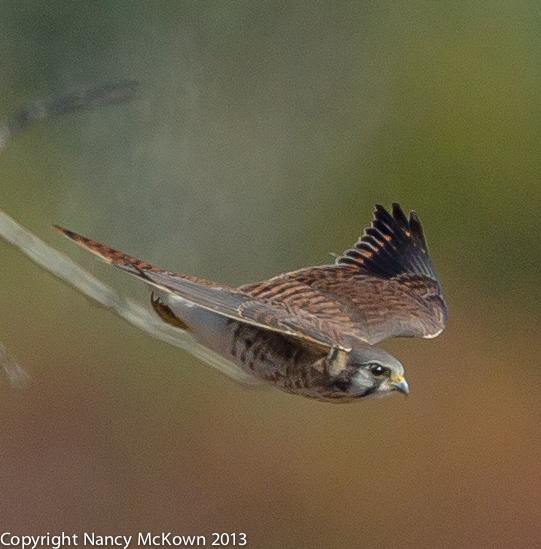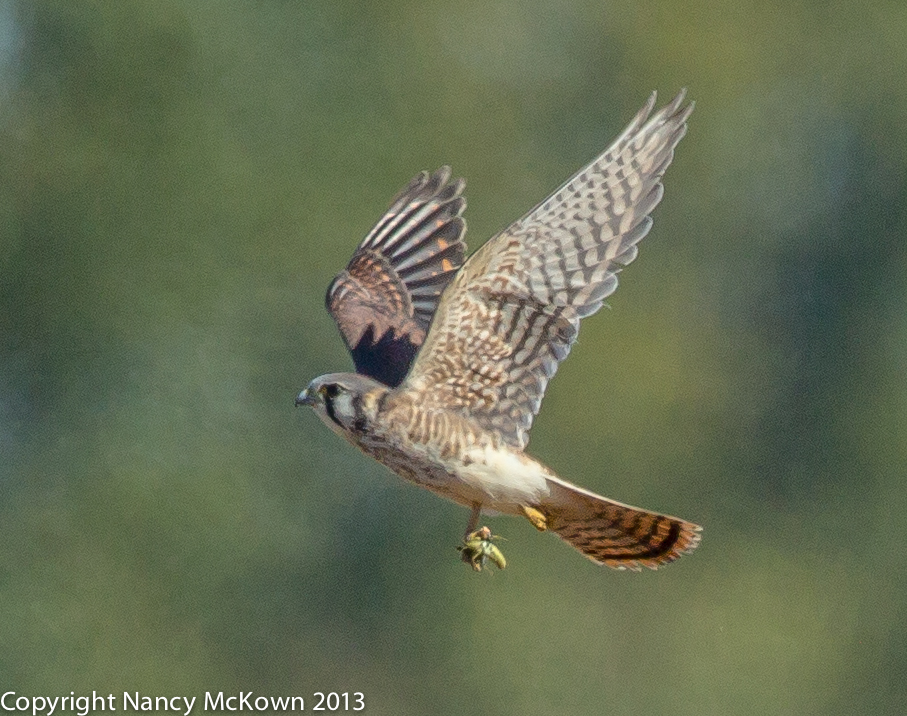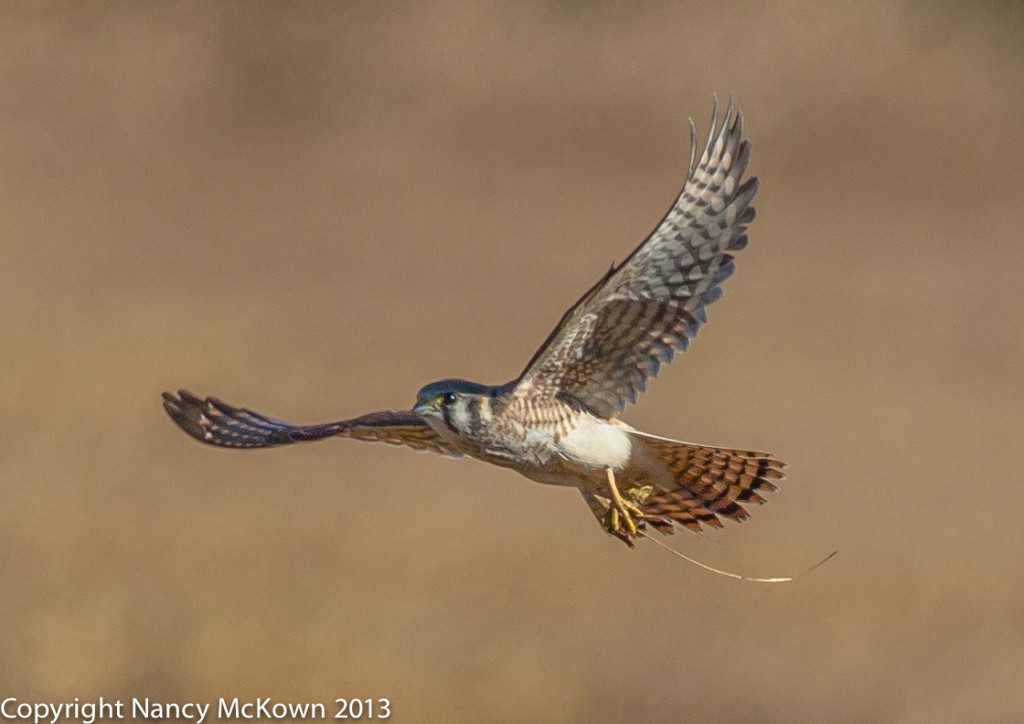The Smallest Raptor in North America
When I saw my first American Kestrel, I was enthralled. Beautiful and graceful little hawks, no bigger than mourning doves, but quick and ferocious. A kestrel can be distinguished from other falcons by the two black, vertical lines on both sides of its face.
Foliage Background and Wingtip Clarity
My goal for this shoot was to photograph kestrels in flight with a melt-away foliage background. While blue sky is certainly prettier than gray or white, a solid color background is often less interesting than foliage or dramatic, multi-colored skies.
One of my challenges was to freeze movement on the flying kestrel, not just in head and body, but clear up to the wingtips. That meant getting close, using a fast shutter and hoping the sun would provide strong, ambient light. NOTE: See blog post about bokeh here.
Birds in Flight, Flying Low
Avoiding the sky and the horizon line in the background of a flying bird took planning and some luck. The kestrels had to be flying rather low.
The opportunity presented itself when I saw two kestrels hunting for grasshoppers in a cut field, flying down to the ground to snatch a grasshopper and then up again to a low branch to devour it.
The background was a soft gold from cut corn stalks with some green, leafy tree branches. The sun was behind me and to my right. Nothing in the background was too busy or distracting. (Busy backgrounds could cause the camera’s autofocus to continually search back and forth in an effort to lock focus on the subject, preventing the photographer from successfully pressing the shutter. For more information on focus, see this Post.)
Moving Closer to Photograph Kestrels
Kestrels are very cautious and usually fly off if they see a human lurking about. I started photographing the kestrels from the car, but the distance between the camera and bird was too great to get a decent shot. I eventually got out of my car with my camera and tripod and moved about slowly, letting them get use to me, hoping they would not leave. I kept moving closer, slowly, about 10 steps at a time, at an angle, never coming right at them. Each time I move 10 steps, I stopped, took more shots, and moved closer again.
They were watchful, but tolerated me, until I passed some hidden but forbidden barrier. And they were gone.

ISO 1250; f/6.3; 1/4000 second

ISO 800; f/5.6; 1/4000 Second

ISO 1000; f/5.6; 1/4000 second

ISO 1000; f/6.3; 1/4000 Second
Ambient Light Was Not Strong
Southwest Michigan is not blessed with a lot of sunny days. I did not have the light I needed to keep a fast shutter and low ISO. I ended up shooting with higher ISO than I wanted, and further away than I had hoped, and thus sacrificed tack sharp clarity.
Getting Closer to Photograph Birds
I did, however, accomplish my goals of photographing kestrels with an interesting background and freezing the action to the wing tips.
As with most shoots, I would have liked to get closer to the birds. Clearly, I’m too conspicuous, despite my attempts to move slowly and blend. It might be time to look into buying a bird blind.









